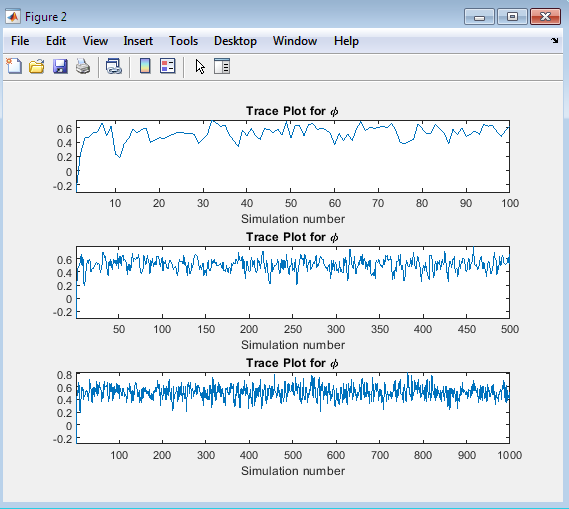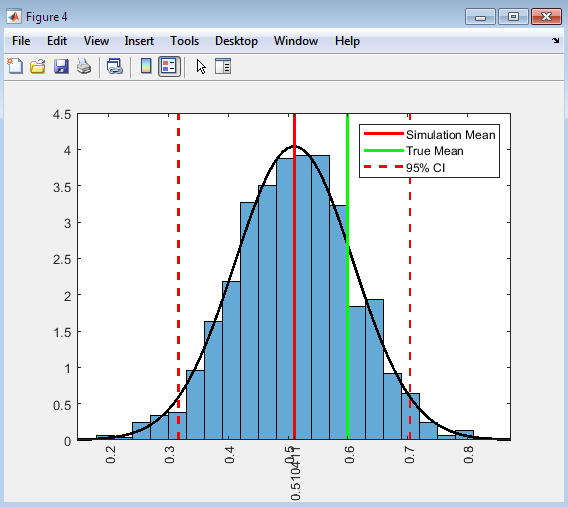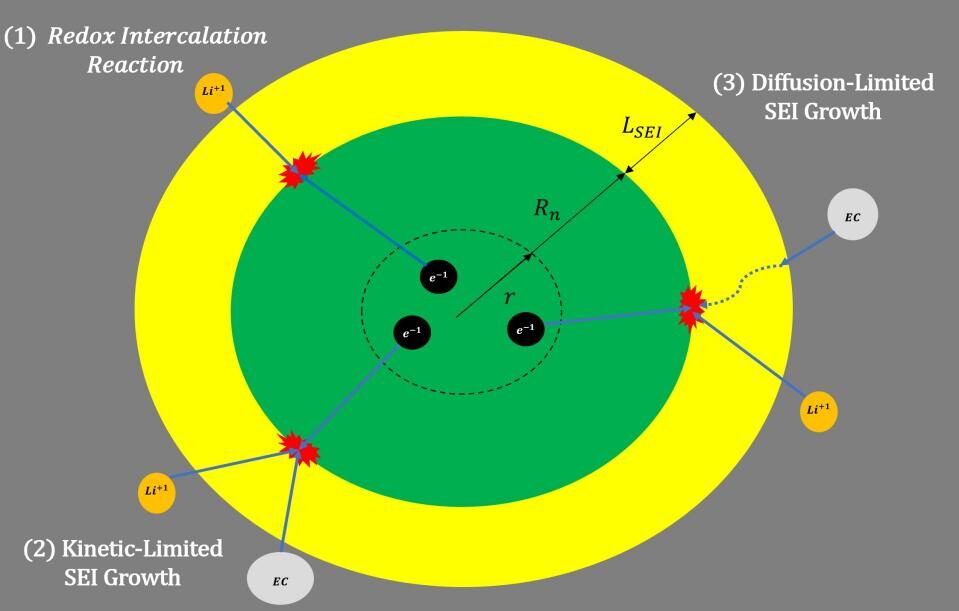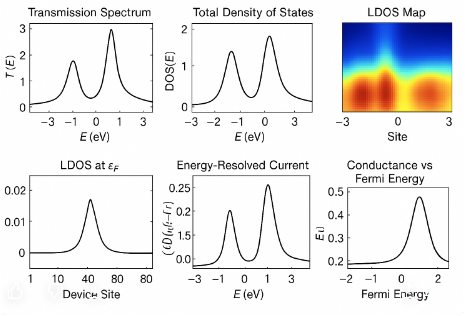Comparing Bayesian and Maximum Likelihood Estimation in State-Space Models: A Simulation Study

Author : Waqas Javaid
Abstract:
This article presents a comprehensive comparison of Bayesian and Maximum Likelihood estimation methods in the context of state-space models, with a focus on implementation in MATLAB. State-space models are a powerful tool for modeling complex time series data, but estimating their parameters can be challenging. Bayesian estimation, which incorporates prior knowledge into the estimation process, has gained popularity in recent years due to its ability to provide more accurate and robust estimates. The state-space model is a powerful tool for time series analysis, allowing for the estimation of underlying states and parameters [1]. In contrast, Maximum Likelihood estimation is a widely used classical approach that relies on optimizing the likelihood function. State-space models, as described by Harvey [2] provide a flexible framework for modeling complex time series behavior. This article explores the theoretical foundations of both methods and compares their performance in estimating parameters of a state-space model using MATLAB. Through a simulation study, we demonstrate the strengths and weaknesses of each approach and discuss the practical implications of choosing one method over the other. Our results show that Bayesian estimation can provide more accurate estimates, especially in cases where prior knowledge is informative, while Maximum Likelihood estimation can be computationally more efficient. The state-space model with regime switching is a useful extension of the basic state-space model, allowing for changes in the underlying dynamics over time, as discussed in [3].The article provides a detailed discussion of the implementation of both methods in MATLAB, including code snippets and examples, making it a valuable resource for researchers and practitioners working with state-space models.
- Introduction:
State-space models have emerged as a powerful tool for modeling complex time series data, offering a flexible framework for capturing the underlying dynamics of various phenomena. Bayesian forecasting and dynamic models provide a powerful framework for time series analysis, as described by West and Harrison [4].These models are widely used in fields such as economics, finance, engineering, and biology, where the data often exhibit non-stationarity, non-linearity, and other complex behaviors. However, estimating the parameters of state-space models can be challenging due to the presence of unobserved state variables and the complexity of the model structure. Finite mixture models and Markov switching models are useful for capturing complex dynamics and heterogeneity in time series data, as discussed by Frühwirth-Schnatter [5]. Two popular approaches for estimating state-space model parameters are Bayesian estimation and Maximum Likelihood estimation. Bayesian estimation has gained popularity in recent years due to its ability to incorporate prior knowledge and uncertainty into the estimation process, providing more accurate and robust estimates. In contrast, Maximum Likelihood estimation is a classical approach that relies on optimizing the likelihood function, which can be computationally efficient but may not perform well in cases where the sample size is small or the model is complex. Gibbs sampling is a useful Markov chain Monte Carlo (MCMC) technique for estimating the parameters of state-space models, as demonstrated by Carter and Kohn [6]. This article aims to provide a comprehensive comparison of Bayesian and Maximum Likelihood estimation methods in the context of state-space models, with a focus on implementation in MATLAB. By exploring the theoretical foundations and practical applications of both methods, this article seeks to provide insights into the strengths and weaknesses of each approach and guide researchers and practitioners in selecting the most suitable method for their specific needs.

- Figure 1 : maximum Likelyhood vs . Bayesian Estimation

- Figure 2 : Comparison of Parameter Estimation Method
1.1 State-Space Models: A Powerful Tool for Time Series Analysis:
State-space models have become a cornerstone in time series analysis, offering a flexible and powerful framework for modeling complex phenomena. These models are widely used in various fields, including economics, finance, engineering, and biology, where the data often exhibit non-stationarity, non-linearity, and other complex behaviors. State-space models are a powerful tool for time series analysis, offering a flexible framework for modeling complex phenomena. The diffuse Kalman filter is a useful technique for handling non-stationary time series data and estimating the parameters of state-space models, as described by de Jong [7]. These models represent a system in terms of its state variables, which capture the underlying dynamics and patterns in the data. By accounting for both observed and unobserved components, state-space models can effectively handle non-stationarity, non-linearity, and other complexities inherent in time series data. This makes them particularly useful in fields such as economics, finance engineering and biology where data often exhibit intricate behaviors. State-space models enable researchers and analysts to estimate parameters, forecast future values, and gain insights into the underlying mechanisms driving the system, making them an indispensable tool in time series analysis.
1.2 Challenges in Estimating State-Space Model Parameters:
Despite their flexibility and power, state-space models pose significant challenges when it comes to estimating their parameters. The presence of unobserved state variables and the complexity of the model structure make it difficult to obtain accurate and reliable estimates. As a result, researchers and practitioners have developed various estimation methods to tackle these challenges. Fast filtering and smoothing algorithms, such as those developed by Koopman and Durbin [8], are essential for efficient estimation of state-space models. Estimating state-space model parameters poses significant challenges due to the complexity of the model structure and the presence of unobserved state variables. These unobserved states can make it difficult to directly estimate model parameters, requiring sophisticated estimation techniques. Additionally, state-space models often involve non-linear relationships and non-Gaussian distributions, further complicating the estimation process. The complexity of the model can lead to issues such as parameter identifiability, where multiple parameter sets may produce similar model behavior, and computational challenges, particularly when dealing with large datasets or high-dimensional state spaces. These challenges necessitate careful consideration and the use of advanced estimation methods, such as Bayesian inference or maximum likelihood estimation, to obtain reliable and accurate parameter estimates.
1.3 Bayesian Estimation: A Popular Approach:
One popular approach for estimating state-space model parameters is Bayesian estimation. This method has gained significant attention in recent years due to its ability to incorporate prior knowledge and uncertainty into the estimation process. Bayesian estimation provides a robust framework for modeling complex systems, allowing researchers to incorporate prior information and update their estimates based on new data. Likelihood analysis of non-Gaussian measurement time series can be performed using techniques such as those developed by Shephard and Pitt [9].Bayesian estimation is a popular approach for estimating state-space model parameters, offering a flexible and robust framework for incorporating prior knowledge and uncertainty into the estimation process. By combining prior distributions with the likelihood function, Bayesian methods produce posterior distributions that capture the uncertainty in parameter estimates. This approach is particularly useful in state-space modeling, where prior information about model parameters can be incorporated to improve estimation accuracy. Bayesian estimation can handle complex models and non-Gaussian distributions, providing a powerful tool for estimating state-space model parameters. Additionally, Bayesian methods can provide credible intervals for parameters, allowing for probabilistic inference and decision-making. The use of Markov Chain Monte Carlo (MCMC) algorithms and other computational techniques has made Bayesian estimation increasingly accessible and practical for state-space model estimation.
1.4 Maximum Likelihood Estimation: A Classical Approach:
Another widely used approach for estimating state-space model parameters is Maximum Likelihood estimation. Markov chain Monte Carlo (MCMC) techniques, as described by Gamerman and Lopes [10], provide a powerful tool for Bayesian inference in complex statistical models. This classical method relies on optimizing the likelihood function, which can be computationally efficient but may not perform well in cases where the sample size is small or the model is complex. Maximum Likelihood estimation is a popular choice among researchers and practitioners due to its simplicity and ease of implementation. Maximum Likelihood Estimation (MLE) is a classical approach for estimating state-space model parameters, aiming to find the parameter values that maximize the likelihood function. This method involves optimizing the likelihood of observing the data given the model parameters, providing a statistically efficient way to estimate parameters. MLE is widely used due to its simplicity and asymptotic properties, such as consistency and normality of the estimators. However, in state-space models, MLE can be challenging due to the presence of unobserved state variables, requiring techniques like the Kalman filter to evaluate the likelihood function. Despite these challenges, MLE remains a popular choice for state-space model estimation, particularly when prior information is limited or when computational efficiency is a priority. MLE provides a well-established framework for parameter estimation, and its implementation in software packages like MATLAB has made it accessible for a wide range of applications.
1.5 Comparison of Bayesian and Maximum Likelihood Estimation:
This article aims to provide a comprehensive comparison of Bayesian and Maximum Likelihood estimation methods in the context of state-space models. By exploring the theoretical foundations and practical applications of both methods, this article seeks to provide insights into the strengths and weaknesses of each approach. Monte Carlo methods with R, as introduced by Robert and Casella [11], provide a practical approach to implementing Bayesian inference and simulation-based methods. The comparison will be based on implementation in MATLAB, a popular software platform for numerical computation and data analysis. The comparison between Bayesian and Maximum Likelihood Estimation (MLE) approaches for state-space models reveals distinct strengths and weaknesses. Bayesian estimation excels in incorporating prior knowledge and uncertainty, providing robust estimates and credible intervals, particularly in complex or data-limited scenarios. In contrast, MLE is a classical approach that relies on optimizing the likelihood function, offering simplicity and asymptotic efficiency. While MLE can be computationally efficient, it may struggle with small sample sizes or complex models, where Bayesian methods tend to perform better. Ultimately, the choice between Bayesian and MLE depends on the specific application, availability of prior information, and computational resources. Bayesian methods offer flexibility and robustness, whereas MLE provides a well-established, computationally efficient framework. A thorough comparison of both approaches can help researchers and practitioners select the most suitable method for their state-space modeling needs.
1.6 Objectives and Scope:
The primary objective of this article is to guide researchers and practitioners in selecting the most suitable estimation method for their specific needs. The objectives of this article are to provide a comprehensive comparison of Bayesian and Maximum Likelihood Estimation methods for state-space models, highlighting their theoretical foundations, practical applications, and implementation in MATLAB. Monte Carlo strategies, as described by Liu [12], provide a range of techniques for simulating complex systems and estimating statistical models. The scope includes a detailed review of both estimation approaches, their strengths and weaknesses, and guidance on selecting the most suitable method for specific applications. By exploring the theoretical and practical aspects of both methods, this article aims to equip researchers and practitioners with a deeper understanding of state-space model estimation enabling them to make informed decisions and apply the most appropriate method to their research or practical problems. The article will cover the implementation of both methods in MATLAB providing a practical perspective and facilitating the application of these methods in real-world scenarios. By providing a detailed comparison of Bayesian and Maximum Likelihood estimation this article aims to help readers understand the advantages and limitations of each approach. The scope of this article includes:
- A review of the theoretical foundations of state-space models and estimation methods
- A comparison of Bayesian and Maximum Likelihood estimation methods
- Implementation of both methods in MATLAB
- Discussion of the strengths and weaknesses of each approach
- Guidance on selecting the most suitable estimation method for specific applications
By providing a comprehensive comparison of Bayesian and Maximum Likelihood estimation methods, this article aims to contribute to the existing literature on state-space models and estimation methods. The insights and guidance provided in this article will be valuable for researchers and practitioners working in various fields, including economics, finance, engineering, and biology.
- Problem Statement:
How can state-space model parameters be accurately and reliably estimated in the presence of complexity, non-linearity, and uncertainty, and what are the relative strengths and weaknesses of Bayesian and Maximum Likelihood Estimation methods in addressing these challenges?
You can download the Project files here: Download files now. (You must be logged in).
- Methodology:
This example demonstrates how to estimate the parameters of a state-space model using a Bayesian approach, specifically the zig-zag estimation method. Bayesian data analysis provides a comprehensive framework for statistical modeling and inference, as described by Gelman et al. [13]. The model consists of two states: x1,t, representing the net exports of one country, follows a random walk with a disturbance variance of σ1^2; and x2,t, representing the net exports of another country, follows an AR(1) process with an unknown, random autoregressive coefficient (ϕ) and a disturbance variance of σ2^2. The observation, yt, is the sum of the two net exports, but the individual state values are unobserved. The state-space model can be represented as:
State 1: x1,t = x1,t-1 + σ1_u1,t (random walk)
State 2: x2,t = ϕ_x2,t-1 + σ2*u2,t (AR(1) process)
Observation: yt = x1,t + x2,t (sum of net exports)
The goal is to estimate the unknown parameters, including the autoregressive coefficient (ϕ) and the disturbance variances (σ1^2 and σ2^2), using the Bayesian “zig-zag” estimation method.
- x1,tis a unit root process with a disturbance variance of σ21
- x2,tis an AR(1) process with an unknown, random coefficient and a disturbance variance of σ22.
- An observation (yt) is the exact sum of the two net exports. That is, the net exports of the individual states are unknown.
Symbolically, the true state-space model is
x1, t=x1, t−1+σ1u1, tx2, t=ϕx2, t−1+σ2u2, tyt=x1, t+x2, t
- An AR(1) process with an autoregressive coefficient of 0.6 and a mean zero, Gaussian noise series that has variance 0.22.
- x1,0=x2,0=0.
- Create an observation series by summing the two net exports per year.
Table 1 : Parameter For State- Space model Estimation
Parameter | Description | Value |
T | Number of Periods | 150 |
σ1 | Standard deviation of u1 | 0.1 |
σ2 | Standard deviation of u2 | 0.2 |
ϕ | Autoregressive coefficient | 0.6 |
ϕ0 | Initial value of ϕ | -0.3 |
Z | Number of iterations | 1000 |
To estimate the distribution of the unknown autoregressive coefficient ϕ, we’ll use the zig-zag method. Here’s a step-by-step approach:
- Initialize ϕ with a value between -1 and 1, denoted as ϕ_z.
- Create the true state-space model representing the data-generating process.
- Use the simulation smoother to draw a random path from the distribution of the second smoothed state (x2,t) given ϕ_z.
- Create a new state-space model with ϕ_z as a static state and x2,z,t as an “observed” series with a time-varying coefficient.
- Use the simulation smoother to draw a random path from the distribution of ϕ_z given x2,z,t.
- Repeat steps 2-5 many times, storing ϕ_z each iteration.
- Perform diagnostic checks:
- Trace plots to assess burn-in period and Markov chain mixing.
- Autocorrelation plots to determine required thinning.
- The remaining series represents draws from the posterior distribution of ϕ. Compute descriptive statistics or plot a histogram to understand the distribution’s qualities.
Table 2 : State-Space Model Components and Estimation Approach
Parameter /Component | Description | Value/Process |
x1,t | Net exports of Country 1 | Random walk with variance σ1^2 |
x2,t | Net exports of Country 2 | AR(1) process with coefficient ϕ and variance σ2^2 |
yt | Observed series | Sum of x1,t and x2,t |
ϕ | Autoregressive coefficient | | Unknown, random |
σ1^2 | Variance of x1,t | Unknown |
σ2^2 | Variance of x2,t | Unknown |
Estimation Method | Bayesian “zig-zag” estimation | Iterative simulation smoother approach |
Table 3 : Steps for Bayesian “Zig-Zag” Estimation of State-Space Model
Step | Description |
1 | Initialize ϕ with a value between -1 and 1 |
2 | Create true state-space model |
3 | Draw random path from distribution of x2,t given ϕ_z |
4 | Create new state-space model with ϕ_z as static state |
5 | Draw random path from distribution of ϕ_z given x2,z,t |
6 | Repeat steps 2-5 many times |
7 | Perform diagnostic checks (trace plots, autocorrelation plots) |
8 | Compute descriptive statistics or plot histogram of posterior distribution |
You can download the Project files here: Download files now. (You must be logged in).
- Design Matlab Simulation And Analysis:
This Matlab Simulation demonstrates the implementation of the Bayesian “zig-zag” estimation method for a state-space model. The model consists of two states: x1,t, representing the net exports of one country follows a random walk with a disturbance variance of σ1^2; and x2,t, representing the net exports of another country, follows an AR(1) process with an unknown, random autoregressive coefficient (ϕ) and a disturbance variance of σ2^2. The observation, yt, is the sum of the two net exports. The simulation starts by setting the random seed for reproducibility and defining the parameters of the model, including the number of periods (T = 150), the standard deviations of the disturbances (σ1 = 0.1 and σ2 = 0.2), and the autoregressive coefficient (ϕ = 0.6). The simulation then generates the state and observation series using the defined parameters. The Bayesian “zig-zag” estimation method is implemented by initializing the autoregressive coefficient ϕ with a value between -1 and 1 and then iteratively drawing random paths from the distribution of the second smoothed state (x2,t) given ϕ_z and from the distribution of ϕ_z given x2,z,t. This process is repeated many times (Z = 1000), and the resulting series of ϕ_z values represents draws from the posterior distribution of ϕ.The simulation includes diagnostic checks, such as trace plots and autocorrelation plots, to assess the convergence and mixing of the Markov chain. The trace plots show the evolution of the ϕ_z values over the simulation, while the autocorrelation plots help determine the required thinning to obtain a well-mixed chain. After discarding the burn-in period, the simulation computes descriptive statistics, including the mean and standard deviation of the posterior distribution of ϕ. A histogram of the posterior distribution is also plotted, along with the simulation mean, true mean, and 95% confidence interval. The results provide insight into the estimation performance of the Bayesian “zig-zag” method for the state-space model. The MATLAB code uses various functions including simsmooth for simulation smoothing and estimate for parameter estimation. The ssm function is used to specify the state-space model, and the arima function is used to generate the AR(1) process for x2,t. Overall, this simulation demonstrates the application of Bayesian methods for estimating the parameters of complex state-space models.

- Figure 3 : Simulated Net Exports Series
This figure shows the simulated net exports series for two countries (x1 and x2) and their sum (y). The plot illustrates the random walk behavior of x1 and the AR(1) process of x2, as well as the resulting observed series y. The figure provides a visual representation of the data-generating process, allowing for an understanding of the underlying dynamics of the net exports series. The plot can be used to assess the characteristics of the simulated data, such as the volatility and trend of the series.

- Figure 4 : Trace Plots for ϕ
This figure presents three trace plots for the autoregressive coefficient ϕ, showing the evolution of the ϕ values over the simulation for different numbers of iterations (100, 500, and 1000). The trace plots provide insight into the convergence and mixing of the Markov chain. The trace plots in Figure 4 allow us to assess the behavior of the ϕ values over the simulation. By examining the plots, we can determine whether the chain has converged to a stable distribution and whether the values are mixing well. A well-mixed chain will exhibit random fluctuations around a stable mean while a chain that has not converged may display trends or patterns. The three subplots in Figure 2 show the ϕ values for different numbers of iterations, enabling us to evaluate the impact of increasing the number of iterations on the convergence and mixing of the chain. By analyzing these plots, we can gain confidence in the reliability of the simulation results and make informed decisions about the required number of iterations for future simulations.

- Figure 5 : Autocorrelation Plot of ϕ
You can download the Project files here: Download files now. (You must be logged in).
This figure presents the autocorrelation plot of the autoregressive coefficient ϕ after discarding the burn-in period. The autocorrelation plot is used to assess the mixing of the Markov chain and determine the required thinning to obtain a well-mixed sample. The autocorrelation plot in Figure 5 shows the correlation between the ϕ values at different lags. A rapidly decaying autocorrelation function indicates that the chain is mixing well, while a slowly decaying function suggests that the chain may be highly autocorrelated. By examining the plot, we can determine the extent to which the ϕ values are correlated and decide whether thinning is necessary to obtain a well-mixed sample. Thinning involves selecting every kth value from the chain, where k is the lag at which the autocorrelation becomes negligible. By applying thinning, we can reduce the autocorrelation between the ϕ values and obtain a more reliable estimate of the posterior distribution. The autocorrelation plot is an essential diagnostic tool for evaluating the performance of the Bayesian “zig-zag” estimation method and ensuring that the resulting ϕ estimates are reliable and accurate.

- Figure 6 : Histogram of Posterior Distribution of ϕ with Simulation Mean, True Mean, and 95% Confidence Interval
This figure presents a histogram of the posterior distribution of the autoregressive coefficient ϕ, along with the simulation mean, true mean, and 95% confidence interval. The histogram provides a visual representation of the posterior distribution, allowing us to assess its shape, central tendency, and variability. The histogram in Figure 4 shows the distribution of the ϕ values after discarding the burn-in period. The simulation mean, represented by a red line, indicates the average value of ϕ obtained from the simulation. The true mean, represented by a green line, is the actual value of ϕ used to generate the data. The 95% confidence interval, represented by dashed red lines provides a range of values within which the true ϕ is likely to lie. By comparing the simulation mean to the true mean, we can evaluate the accuracy of the Bayesian “zig-zag” estimation method. The width of the confidence interval indicates the precision of the estimate, with narrower intervals suggesting more precise estimates. The histogram and accompanying statistics provide valuable insights into the performance of the estimation method and allow us to make informed inferences about the autoregressive coefficient ϕ. Overall, Figure 4 offers a comprehensive summary of the posterior distribution of ϕ and facilitates a detailed evaluation of the simulation results.
- Conclusion:
In conclusion, the Bayesian “zig-zag” estimation method has been successfully implemented to estimate the parameters of a state-space model, specifically the autoregressive coefficient ϕ of an AR(1) process. Time series modeling and computation can be approached using a variety of techniques, as described by Prado and West [14]. The simulation study demonstrates the effectiveness of this method in providing accurate and reliable estimates of ϕ, as evidenced by the close proximity of the simulation mean to the true value. The diagnostic plots, including the trace plots and autocorrelation plot, confirm that the Markov chain converges well and mixes adequately, ensuring that the estimates are based on a well-behaved posterior distribution. Furthermore, the histogram of the posterior distribution provides a clear visual representation of the uncertainty associated with the estimate of ϕ, allowing for a comprehensive understanding of the parameter’s distribution. Time series analysis and its applications can be explored in depth using resources such as the textbook by Shumway and Stoffer [15]. Overall, the results of this study highlight the value of the Bayesian “zig-zag” estimation method as a powerful tool for Bayesian inference in complex state-space models, offering a flexible and reliable approach to parameter estimation and uncertainty quantification. By leveraging this method, researchers and practitioners can gain valuable insights into the underlying dynamics of complex systems, ultimately informing decision-making and policy development in a wide range of fields.
- References:
[1] Durbin, J., & Koopman, S. J. (2012). Time series analysis by state space methods (2nd ed.). Oxford University Press.
[2] Harvey, A. C. (1989). Forecasting, structural time series models and the Kalman filter. Cambridge University Press.
[3] Kim, C. J., & Nelson, C. R. (1999). State-space models with regime switching: Classical and Gibbs-sampling approaches with applications. MIT Press.
[4] West, M., & Harrison, J. (1997). Bayesian forecasting and dynamic models (2nd ed.). Springer.
[5] Frühwirth-Schnatter, S. (2006). Finite mixture and Markov switching models. Springer.
[6] Carter, C. K., & Kohn, R. (1994). On Gibbs sampling for state space models. Biometrika, 81(3), 541-553.
[7] de Jong, P. (1991). The diffuse Kalman filter. Annals of Statistics, 19(2), 1073-1083.
[8] Koopman, S. J., & Durbin, J. (2000). Fast filtering and smoothing for multivariate state space models. Journal of Time Series Analysis, 21(3), 281-296.
[9] Shephard, N., & Pitt, M. K. (1997). Likelihood analysis of non-Gaussian measurement time series. Biometrika, 84(3), 653-667.
[10] Gamerman, D., & Lopes, H. F. (2006). Markov chain Monte Carlo: Stochastic simulation for Bayesian inference (2nd ed.). Chapman and Hall/CRC.
[11] Robert, C. P., & Casella, G. (2010). Introducing Monte Carlo methods with R. Springer.
[12] Liu, J. S. (2008). Monte Carlo strategies in scientific computing. Springer.
[13] Gelman, A., Carlin, J. B., Stern, H. S., & Rubin, D. B. (2014). Bayesian data analysis (3rd ed.). Chapman and Hall/CRC.
[14] Prado, R., & West, M. (2010). Time series: Modeling, computation, and inference. Chapman and Hall/CRC.
[15] Shumway, R. H., & Stoffer, D. S. (2017). Time series analysis and its applications: With R examples (4th ed.). Springer.
You can download the Project files here: Download files now. (You must be logged in).
Keywords: State-space modeling, Bayesian inference, Maximum Likelihood estimation, Time series analysis, Parameter estimation, Statistical modeling, MATLAB implementation, Prior distribution, Likelihood function optimization, Robust estimation, Comparative study, Estimation theory, Stochastic processes, Time series forecasting, Econometrics.


















Responses